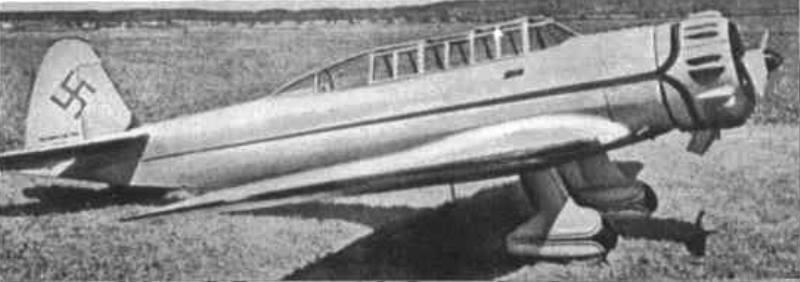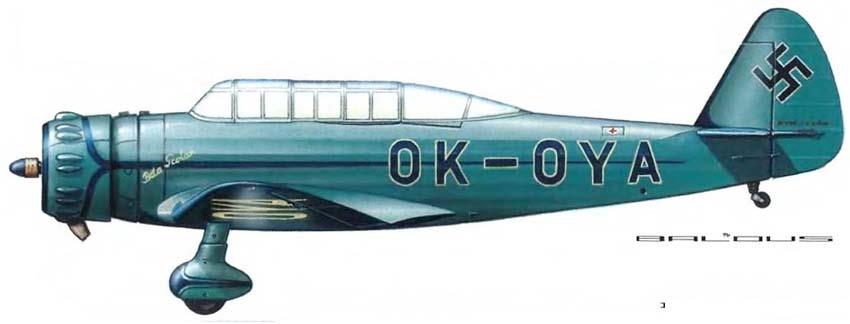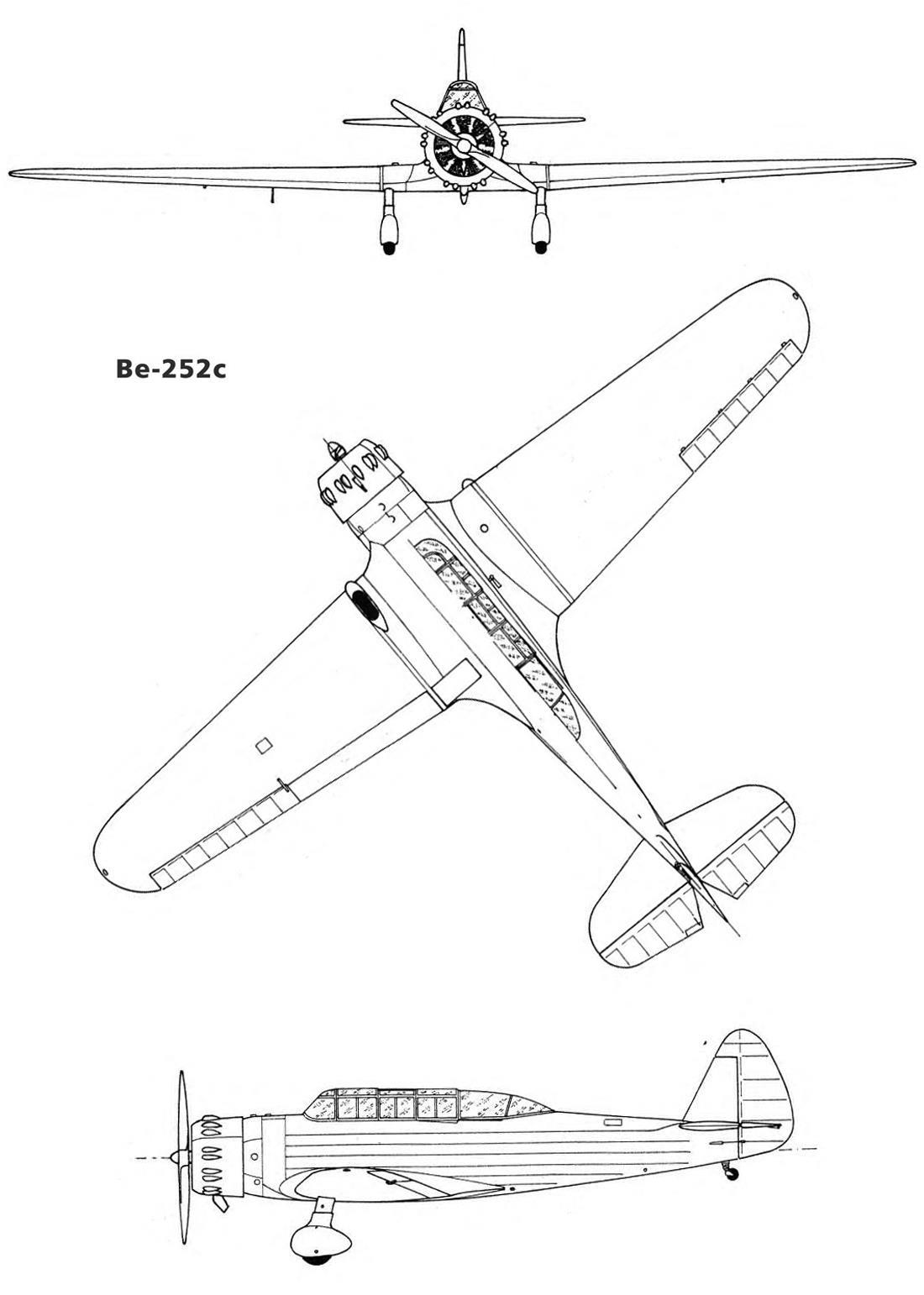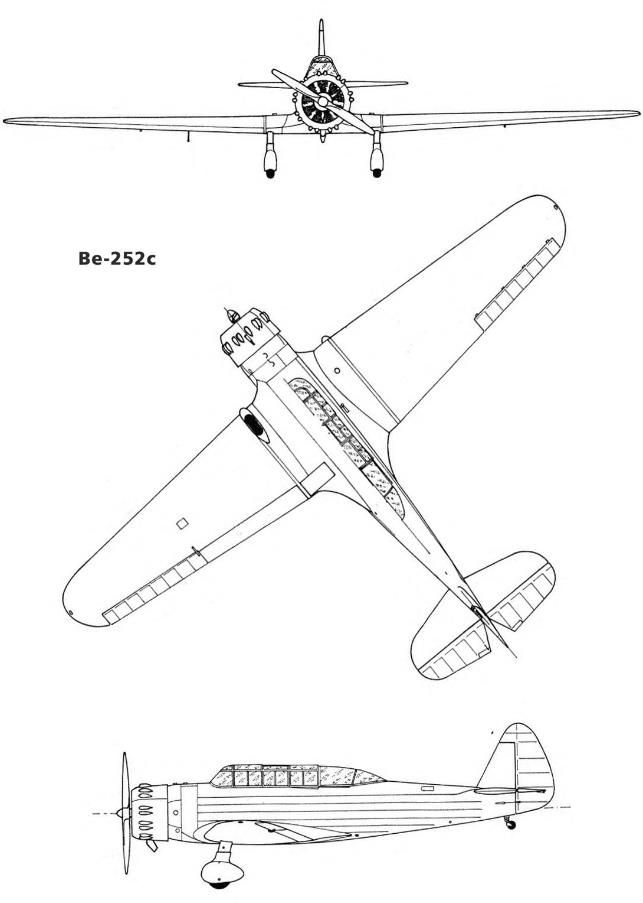| Type |
Two seat trainer used for aerobatics |
| Engine |
1 Walter Scolar with a 2-bladed fixed pitch wooden propeller |
| Dimensions |
Length 7,45 m , height 2,02 m , span 10,966 m , wing area 14,0 m2 , |
| Weights |
Empty 610 kg, loaded , max. take off weight 890 kg |
| Performance |
Max.. speed 250 km/h at sea level, cruising speed 215 km/h, range 500 km, endurance , service ceiling 7000 m , climb 4,2 m/sec. |
| Type |
Werk.Nr |
Registration |
History |
| 252c |
|
OK-OYA |
Used in a trainer role until the end of 1943, after which it was scrapped |



In 1937, the Czech engine manufacturer Walter introduced a new seven-cylinder radial engine, Walter Scolar, with 160 hp. (118 kW). In the same year, the company "Benes & Mraz Tovarna na Letadla" developed a new light multipurpose aircraft Be.252 Beta-Scolar , specifically for this engine.
The Benes-Mraz Be.252 Beta-Scolar aircraft was built on the basis of the Be.250 and was in many ways similar to the Be.50. It was intended for aerobatics training, for which its design was reinforced accordingly.
The first flight of the aircraft (registration number OK-BEZ) took place in April 1938. Despite good flight data, serial production of the aircraft was never started.
Continuing to improve this model, Benes & Mraz designers built an improved version of the aircraft in the winter of next year - Be.252c with a closed "greenhouse" type cockpit and a new engine cowling.
The aircraft (registration OK-OYA) took off in March 1939. And the tests were already carried out by the Germans. The aircraft was transferred to the Luftwaffe, where it was used in a trainer role until the end of 1943, after which it was scrapped.








